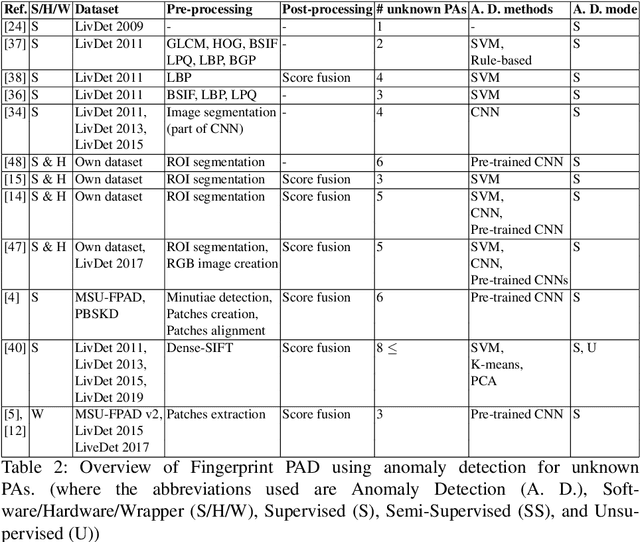Ahmed Madhun
A Survey on Unknown Presentation Attack Detection for Fingerprint
May 17, 2020



Abstract:Fingerprint recognition systems are widely deployed in various real-life applications as they have achieved high accuracy. The widely used applications include border control, automated teller machine (ATM), and attendance monitoring systems. However, these critical systems are prone to spoofing attacks (a.k.a presentation attacks (PA)). PA for fingerprint can be performed by presenting gummy fingers made from different materials such as silicone, gelatine, play-doh, ecoflex, 2D printed paper, 3D printed material, or latex. Biometrics Researchers have developed Presentation Attack Detection (PAD) methods as a countermeasure to PA. PAD is usually done by training a machine learning classifier for known attacks for a given dataset, and they achieve high accuracy in this task. However, generalizing to unknown attacks is an essential problem from applicability to real-world systems, mainly because attacks cannot be exhaustively listed in advance. In this survey paper, we present a comprehensive survey on existing PAD algorithms for fingerprint recognition systems, specifically from the standpoint of detecting unknown PAD. We categorize PAD algorithms, point out their advantages/disadvantages, and future directions for this area.
 Add to Chrome
Add to Chrome Add to Firefox
Add to Firefox Add to Edge
Add to Edge